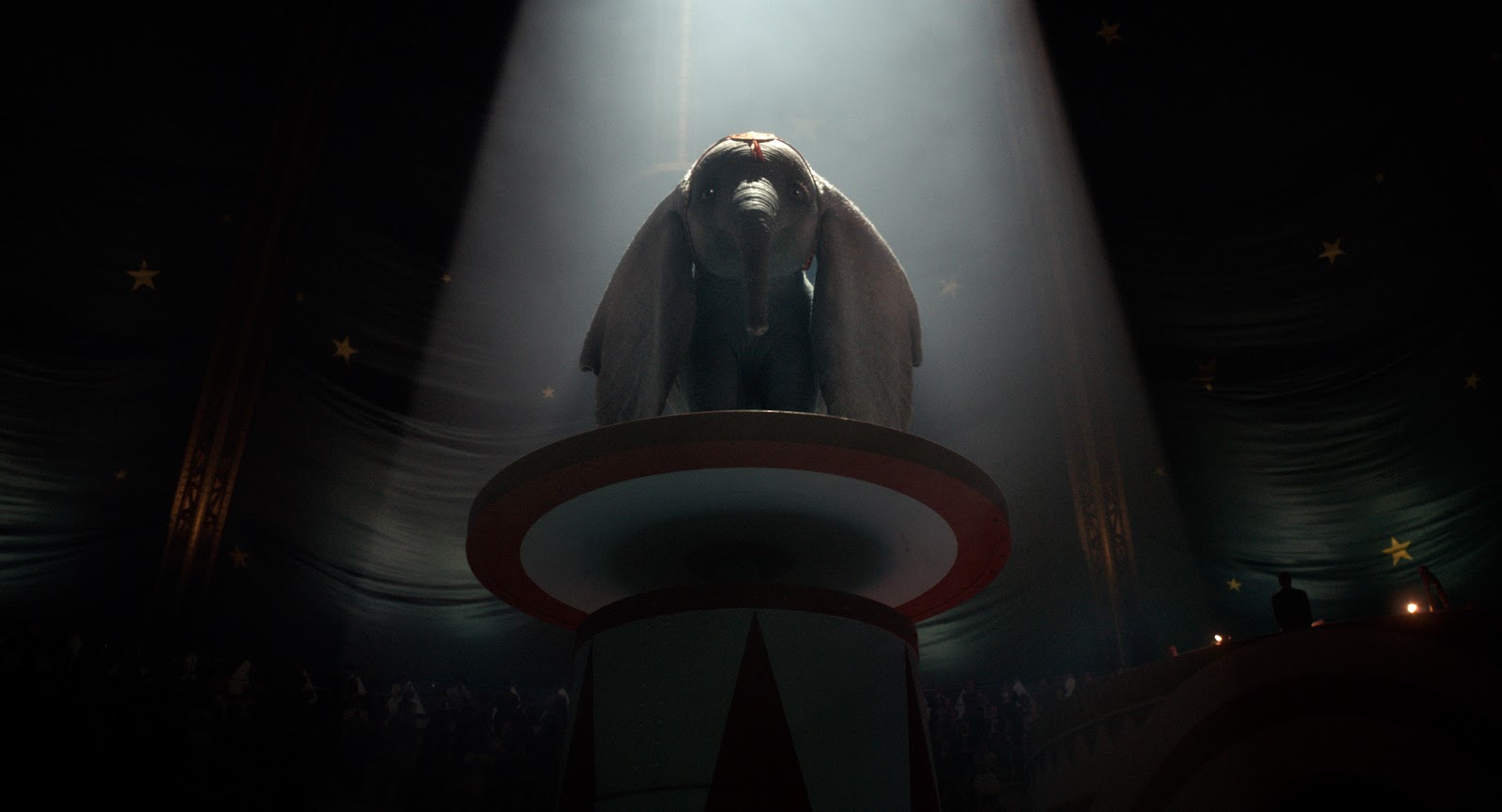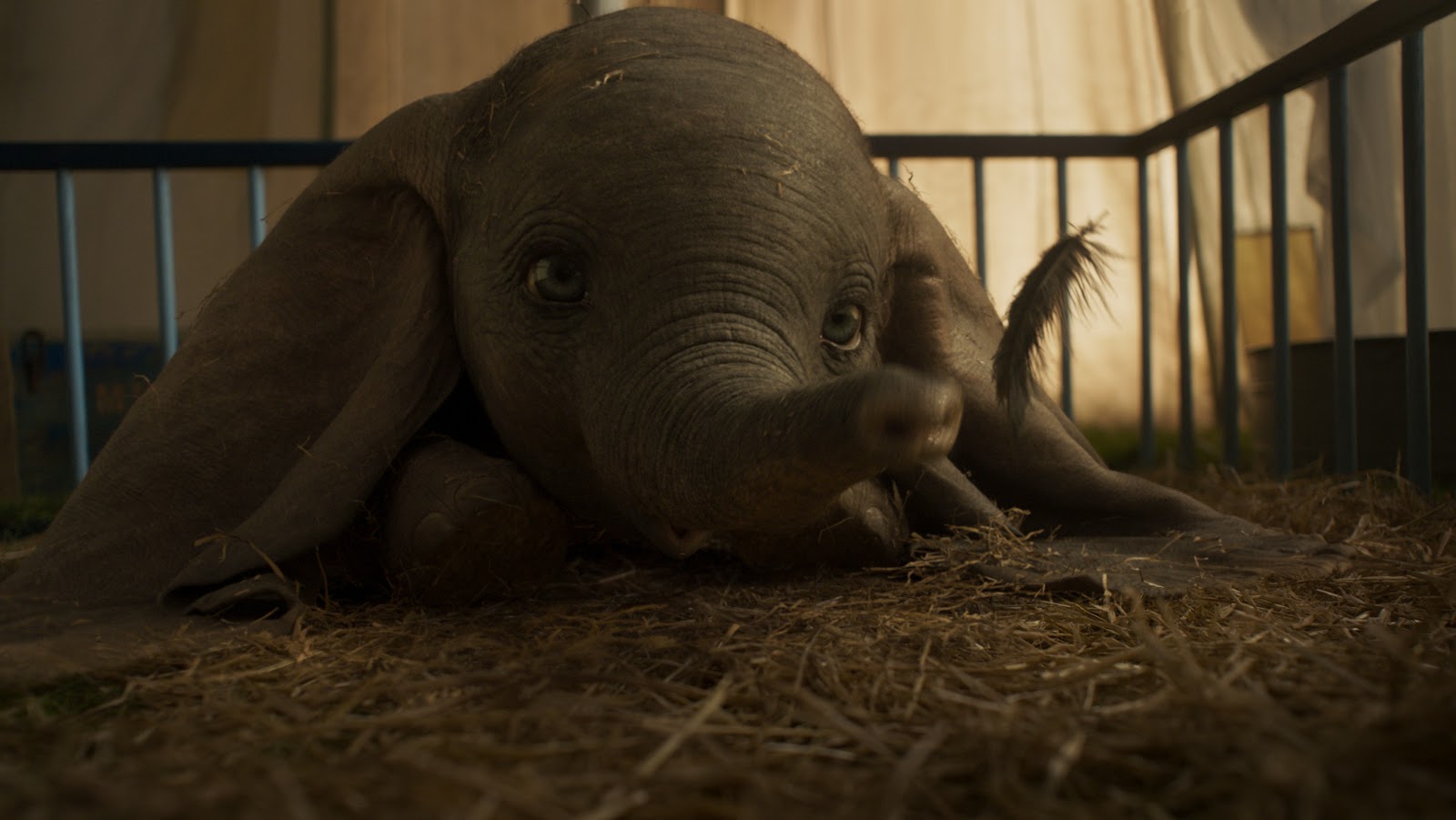To celebrate the home video release of the live-action adaptation of Dumbo, we had the chance to chat with the film’s VFX Supervisor Richard Stammers. In addition to Dumbo, Stammers has worked on Prince Caspian and was the Visual Effects Supervisor on Prometheus, X-Men: Days of Future Past, and The Martian. Here is what he had to say about his work on Dumbo:
Laughing Place:
Can you share what a visual effects supervisor would do on a movie like Dumbo.
Richard Stammers:
My position really involves working closely with the entire film making team as one of the head of departments and responsible solely for the visual effects. And that usually means really helping directors bring their visions to the screen with the aid of computer generated imagery, housing backgrounds, and creating backgrounds. I also was one of those keeping an eye on specifically in this case Dumbo as a character. Being very involved in his design. And developing him and the character through animation, the emotion in his eyes. And making sure that we're consistent with his character and emotion and animation built around it.
Laughing Place:
One thing that I think makes Dumbo rare is that your lead actor is a visual effect and it's not just a special effect or a backdrop or anything like that, although the work on that is great in this film as well. Is it different going into a movie where you need to get a performance out of a visual effect as opposed to just enhancing a scene or making someone jump across a building or something like that?
Richard Stammers:
Yeah, very much so. I mean performance is the foremost result you're going to be an incredibly important part of this. Trying to find what that was, was the great exploration that we did in conjunction with Tim Burton at the beginning of the project. That starts with a really good design and then trying to find him as a character and imagine him in a sort of way that takes a really nice blend of the characteristics of the original cartoon. But sort of really firmly ground him in reality as he has to actually look like a real elephant, but can still convey that sort of range of emotion that he had from the cartoon in a more relative of way. That subtlety sometimes takes a huge amount of effort to find the right sort of method you wanted him to portray that through the shots that Tim wanted to get. Keeping that balance of realism so he has the behavior of a real elephant but you can still feel that emotional connection with him as a character was really important. Filming a key actor or your lead actor you get all the backs from that performance and the animators had to bring that to the screen.
Laughing Place:
You know what I thought was interesting was that obviously it's a different medium than the classic film but it's not just another elephant. When you look into his eyes it felt like Dumbo. It felt like it was the same elephant, just brought to life in a more dimensional way.
Richard Stammers:
What the really interesting part about the process is when we first got that first sort of shape right and the size and proportion of his head and eyes, we looked back at the original cartoon and looked at some sort of key poses and positions where the eyes portrayed the emotions and we found photographs of elephants in similar positions, real elephants, and sort of looked at between the cartoon world and real world, what were the ways could they sit down, their clumsy positions they get into, the way they could sit down on their back legs and how they're sort of quite cute and endearing positions. We found sort of links and similarities between those and we use that as a very interesting starting point of posing our CG Dumbo into these poses and try to find that halfway balance between well, this is what a real elephant can do and this is what the cartoon elephant did. That was sort of useful guidance for maybe ten or twelve poses but we sort of called back to when we did the animation and started exploring sort of how the body language can also enhance what we're seeing of his face
Laughing Place:
You have quite an impressive resume but since Tim Burton came from an animation background did he bring something new to your partnership? Having someone who's worked in animation as opposed to someone who's primarily done work in live action?
Richard Stammers:
Absolutely. His background working as a Disney animator all those years ago I think definitely paid dividends in terms of the feedback that we got generally. Certainly most vocal about how we approached the animation and some of our early tests were really about defining his character and he gave us pretty good feedback on where he could go. I worked very closely with our animation supervisor, Catherine Mullan, and the three of us, Tim, Catherine and myself would work out what we were trying to achieve on each shot and quite often Catherine and I would sort of present things to Tim and he would give us some sort of feedback about, usually actually, we found we were doing a bit too much sometimes and that Tim was quite happy with Dumbo doing a lot less and allowing the eyes to just do so much more than actually trying to over-animate or do more animation than we needed to on the body. So sometimes it was our first task was actually a little bit more complex than it needed to be and we found we were quite often simplifying it, so it's animation.
Laughing Place:
One thing that sets the new Dumbo apart from the classic Dumbo is the amazing environments that the film takes place in. Both from the hometown Medici Circus to the grand scale of Dreamland. Can you talk a little bit about the inspiration behind creating those environments?
Richard Stammers:
One of the overall things about the overall look of the film which is important is that because Dumbo is a sort of caricature of a real elephant, Tim always felt that no matter how realistic we make it, because he had this unusual design, he felt like he needed to be in a world that was a little bit more designed and controlled. His point of reference is that he wanted sort of create this feeling of grand intimacy with the look of the film, feeling a little expressionistic. And by that he kind of meant that well we don't want to go on location and shoot a real field with a real tent because that would mean that Dumbo was living in a very real environment. This company needed to be slightly off that. So as the overall look to itself, created this much expression as it was, for Tim that meant we shot everything in the studio. All the lighting was controlled, the design boards, the tents, and all the aspects of Dreamland had this slightly exaggerated scale and perspectives and it sort of helped lend itself to this expressionistic look, that he used quite a lot, to create a storybook look which helped set scene of entertain the whole story of this world that we create.
That was very much an important part of it and the Medici Circus environment was more straightforward because that was very much room location that we were, beyond what we built as sets, mostly sky and little gaps, and all through gaps they'd been… and you had to think about that and the little town you had to drop that in that we had to create digital effects for. Dreamland was the really big environment build. And whilst we had a huge stage with parts of Dreamland built they were only small parts of the overall park. The big wider shots where we're higher up ended up being an entirely CG creation. And each ride was designed specifically by Rick Heinrichs our production designer in conjunction with Tim. So each of the rides have their own unique shape and interesting silhouette. And Tim always had thought that to get really interesting silhouettes to get sky and not shapes and that was the key thing for him that sort of drove the initial design of Dreamland and it's shape.
Laughing Place:
And just to wrap up, outside of Dumbo himself, do you have a particular moment or fact that you are particularly proud of in Dumbo?
Richard Stammers:
There's so many of them actually. There's a number of big, big challenges and I think for me, you know what amazing creativity we put in to it. Getting someone to fly on Dumbo was probably one of the hardest things we achieved. And just in the way that we had to approach it. We had to be able to build a flying rig for the actors to sit on that moved in a way that was appropriate for Dumbo to move. And that meant sort of doing animation before we started shooting. We had to have animations that could be used to program motion-based and that could actually help the hydraulic actuators, that would impart his body movements to the person sitting on his back whilst his head was moving up and down. Because his ears were flying, his head would be looking as though someone kept their hands on his head, their hands had to move up and down with time to his head, that required a lot of planning and actually becomes very technical in the process. But getting to the point where we could actually film people on that rig and have them appearing like they were flying through our scenes was an amazing undertaking and very rewarding to see that work. And actually knowing that it was working and then Tim seeing it and actually being able to show him minutes after we finish shooting and take it back, we set it up so that we could show him the context and see the act of flying on our animated, pre-animated Dumbo, was incredibly rewarding to get to that stage. That was really cool.
Dumbo is currently available on home video.


